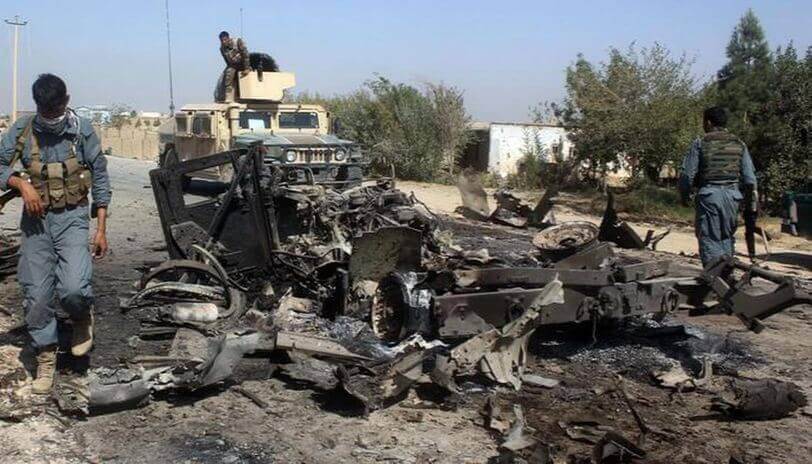A government air strike in Afghanistan’s western Herat province has killed at least 45 people and injured 30, including at least six senior Taliban commanders. Local news outlet Tolo News claimed that the commanders were meeting to plan an attack on government facilities. However, while it is estimated that at least 15 Taliban members were killed, it also estimated that at least eight civilians were killed, including women and children, in a strike that hit a wedding party. It remains unclear whether the others killed were Taliban members or civilians.
Aside from an attempt to hit key targets within the terrorist organization and nullify their planned attack on government buildings, the air strike was also in retaliation to an attack on security checkpoints in the Sra Baghal area of the Maiwand district just a day earlier In fact, around 250 Afghan soldiers have been killed and 220 injured in the past three weeks alone.
On February 29, the US and Taliban signed a ‘historic’ deal, which aimed to carve a path towards ending America’s longest war, one that has stretched nearly two decades. The document, titled ‘Agreement for Bringing Peace to Afghanistan’, outlined a series of commitments from the Taliban and the US relating to counter-terror measures, troop levels, and intra-Afghan dialogue, which would help bring about a permanent comprehensive ceasefire, and pave the way for sustainable peace in the country. The deal also laid out a 14-month timeline for the US and its North Atlantic Treaty Organization (NATO) allies to withdraw all their troops from the region.
The Afghan government has recently been conducting prisoner exchanges with the Taliban as part of the US-brokered peace deal from February. However, many of the conditions of the Afghan peace deal are not being met. For instance, it was stipulated that 5,000 Taliban prisoners and 1,000 captive security forces would be released by March. However, the government has thus far only released 4,019 Taliban members, while the Taliban has freed just half of its prisoners. Furthermore, during the first six months of 2020, 1,213 civilians were killed, and 1,744 have been injured, in 880 separate incidents of violence.
The lack of specific, measurable, and enforceable commitments from the Taliban allowed for differences in interpretation of the agreement, which has been difficult to resolve. Violence by the Taliban has continued unabated following the signing of the peace deal, and a recent UN report revealed that the group had failed to fulfill one of the key tenets of the agreement: to sever ties with al-Qaeda.
The UN report also argues that the Taliban believes it can take over by force, and is, therefore, taking actions to undermine the rule of the government through several destabilizing actions. For example, in contravention to its obligations under the peace deal, the Taliban is blamed for orchestrating an attack at a maternity ward at a hospital run by medical charity Doctors Without Borders (MSF), leading to the death of 16 people, including newborns, their mothers, and nurses. In addition, 24 lives in the capital were also lost to a suicide bombing at a funeral.
US peace envoy Zalmay Khalilzad tweeted his dismay at recent events, saying that the “very violent” past 24 hours must be de-escalated through “peace negotiations and a settlement.” Earlier this month, the US decreased its troop numbers to in Afghanistan 8,600 after withdrawing troops from five bases. Although the US-brokered deal appears to be in tatters, it is unlikely that the US will slow down its troop withdrawal while Trump is in office, as he can use disengagement from foreign wars as part of his campaign rhetoric ahead of the November elections.
2/4 Similarly, we deplore the recent Taliban attacks in which many Afghans have lost their lives.
— U.S. Special Representative Zalmay Khalilzad (@US4AfghanPeace) July 22, 2020
4/4 Rather than setting the process back, we urge all sides to contain the violence, protect civilians, and show necessary restraint as the start of intra-Afghan negotiations is so close.
— U.S. Special Representative Zalmay Khalilzad (@US4AfghanPeace) July 22, 2020

